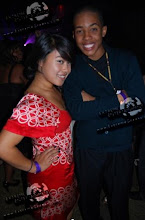Gabrielle "Coco" Chanel's stylish, elegant designs revolutionized fashion during the 1910s, freeing women from the uncomfortable and stiff apparel worn at the end of the 19th century. Chanel furthered her own image: the woman of the 20th century, embodying independence, success, personality, style, and confidence.
The influential Chanel suit, launched in 1924, was an elegant outfit composed of a knee-length skirt paired with a trim, boxy jacket, traditionally made of woven wool with black trim and gold buttons and worn with large costume-pearl necklaces.
Chanel also popularized the little black dress, whose blank-slate versatility allowed it to be worn for both day and night. The black Chanel dress was strapless, backless and more than a little risque. It shocked the general public at large but quickly became a fashion sensation. The Chanel dress premiered in the third ever edition of Playboy. This added to the controversy surrounding the Chanel name.
Much imitated over the years, Chanel's designs were manufactured across more price categories than any other in the high-fashion world. It was Chanel who also introduced 'costume' jewellery to the world of fashion, using a variety of accessories such as necklaces, chains or pearls of several strands. A bag with golden handles, an elegant pearl necklace, a tailleur dressed in black are the symbols of elegance and status that marked forever the history of fashion. But it was Chanel No. 5[3] - considered the number-one selling perfume in the world - which helped her become a millionaire. The perfume was created in 1921 by Ernest Beaux at the request of Chanel, who said about the perfume that it was "a woman's perfume with the scent of woman." Its Art Deco bottle was incorporated into the permanent collection at the Museum of Modern Art in New York in 1959. Chanel No. 5 was the first synthetic perfume to take the name of a designer. One of Coco Chanel's most famous quotes is, "This perfume is not just beautiful and fragrant. It contains my blood and sweat and a million broken dreams."
All of her clothes were emblazoned with the famous Chanel symbol; this, however, was not of her own design. The symbol was given to her by the owner of the Chateau de Cremat (a Chateau on the outskirts of Nice in the south of France). In 1923, she told Harper's Bazaar that "simplicity is the keynote of all true elegance." Chanel always kept the clothing she designed simple and comfortable and revealing. She took what were considered poor fabrics like jersey and upgraded them. She was instrumental in helping to design the image of the 1920's flapper (The term flapper in the 1920s referred to a "new breed" of young women who wore short skirts, bobbed their hair, listened to new Jazz music, and flaunted their disdain for what was then considered acceptable behavior. The flappers were seen as brash for wearing excessive makeup, drinking, treating sex in a casual manner, smoking, driving automobiles,showing a lot of skin, and otherwise flouting conventional social and sexual norms). The German designer Karl Lagerfeld is, since 1983, the art director of Chanel, both for the haute couture and prêt-à-porter.









No comments:
Post a Comment